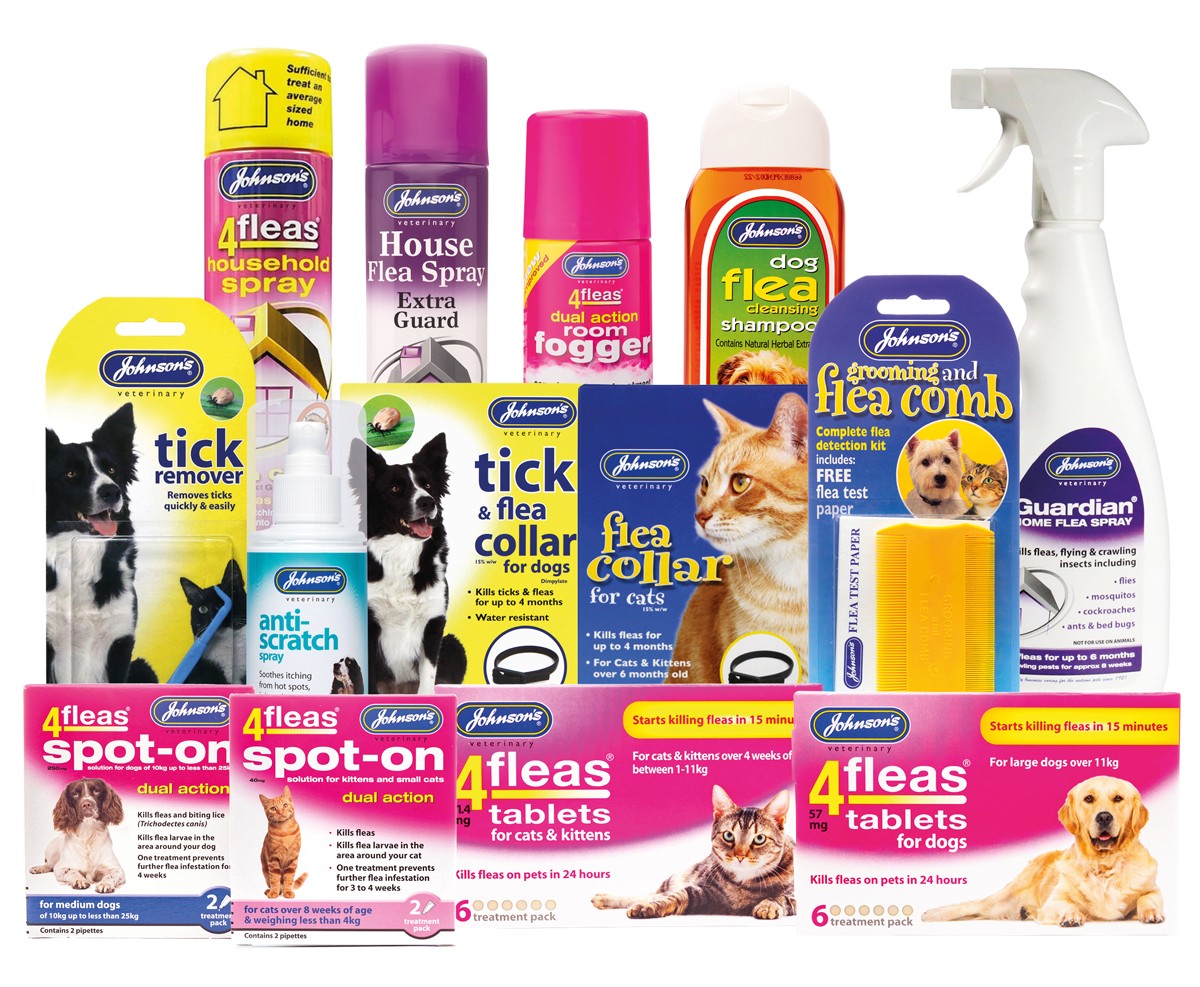Fleas are a common nuisance, tiny, wingless insects that can quickly turn into a major headache. Known for preying on mammals and birds, these pests are not just a problem for pet owners. A single female flea can lay up to 50 eggs daily, leading to rapid infestations. And while our furry friends are often the first to be blamed, fleas are more than happy to bite humans too.
Understanding the flea life cycle is key to controlling these pests. Fleas go through four distinct stages: egg, larvae, pupae, and adult. The duration of each stage can vary from a few days to several months, depending on environmental conditions. Once they reach adulthood, fleas need to find a host to survive, feeding on blood to live and reproduce.
Many people believe that fleas are only an issue if you have pets. However, fleas can become a significant problem even in pet-free homes.
While it’s true that cats and dogs often bring fleas into our homes from the outdoors, these pests are resourceful and can enter your living space in various ways. They can hitch a ride on used furniture or carpets, or even be left behind by previous homeowners who had pets.
People visiting your home can also unknowingly introduce fleas. If someone has recently dealt with an infestation or been around infested animals, they can carry fleas into your house.
The problems caused by fleas go beyond itchy bites. Flea bites can become infected, and fleas can transmit diseases such as spotted fever, plague, typhus, and cat scratch fever. Prompt action is crucial to address a flea infestation and protect your household’s health.
Can Fleas Live in a House Without Pets?
Yes, fleas can absolutely live in a house without pets. In the absence of animal hosts, fleas will feed on human blood. They often bite humans while they are resting or sleeping. While humans aren’t their preferred hosts and fleas won’t typically live on us long-term due to lack of fur and constant movement, our homes can provide suitable environments for them to thrive. Fleas are attracted to warmth and the carbon dioxide we exhale, making bedrooms particularly appealing.
To avoid being disturbed, fleas seek out dark, warm, and humid places in our homes. Carpets, rugs, and bathmats are prime locations where they can lay eggs, often initially brought in by pets. Flea larvae hatch and burrow deep into carpet fibers where it’s dark and warm, feeding on organic debris like dead skin cells, food crumbs, and adult flea feces (flea dirt).
Upholstered furniture, especially fabric couches and chairs, can also become flea havens. Fabrics retain heat better than leather, making them more attractive to fleas.
Fleas may even reside on clothing, leading to bites throughout the day as you move around your home.
Signs of a Flea Infestation in Pet-Free Homes
Even without pets, be vigilant for these signs that may indicate a flea infestation in your house:
- Flea Bites: Look for bites on your body, often appearing in clusters of two or three small, red, itchy dots. These bites can be intensely itchy and may become swollen or inflamed.
- Flea Dirt: Spotting flea dirt, which looks like coarse ground black pepper, on carpets and rugs is a strong indicator. Flea dirt is actually flea feces, composed of digested blood, and will leave a reddish-brown stain if moistened, similar to dried blood.
- Visible Adult Fleas: Adult fleas are small, oval-shaped insects, about 1-2mm long. They are typically reddish-brown or black and can be seen jumping or crawling, especially on light-colored surfaces.
- Flea Eggs: Flea eggs are extremely small (around 0.5mm) and difficult to see with the naked eye. They are light, off-white, and almost translucent. On dark backgrounds, they might appear like a scattering of salt.
- Flea Larvae and Pupae: Flea larvae are slightly easier to spot. They are worm-like, legless, about 1-2mm long, and off-white with short hairs. Flea pupae, measuring 2-3mm, are encased in silken cocoons that often accumulate debris from their surroundings, making them camouflaged.
How to Check for Fleas in Your Home
Several simple tests can help you determine if fleas are present in your home. The best method depends on where you suspect fleas are hiding:
- Floors, Rugs, and Carpets: For carpets, try the white sock test. Wear long white socks pulled up over your ankles and calves and walk around on your carpets, shuffling your feet to disturb the fibers. Any fleas present are more likely to jump onto the white socks, making them easier to see. You can also manually inspect carpets, especially along edges where they meet baseboards, by parting the fibers and looking for fleas, eggs, larvae, pupae, or flea dirt. For hard floors, use a damp white cloth or swab to wipe up dust from surfaces and cracks. Examine the collected debris for signs of flea dirt, eggs, or pupae.
- Fabric Curtains: While fleas prefer to hide in darker areas, they may take refuge in curtain folds, particularly if curtains touch the floor. Carefully inspect the back of curtains against the wall, paying attention to seams and bottom edges.
- Upholstered Furniture: If you suspect fleas are in your furniture, especially if you are bitten when sitting on it, check underneath sofas and chairs. Examine cushions, cushion covers, armrests, and the main frame. Lift cushions and inspect the crevices and areas where cushions rest, as fleas and their eggs often accumulate there. Wipe down furniture with a damp, light-colored cloth and check the cloth for any flea signs.
- Beds & Bedding: To check for fleas in your bed, inspect mattress edges, folds, seams, and tags, along with the bed frame and headboard, especially corners and undersides. Use a credit card or similar object to gently scrape along mattress seams and bedding edges, holding a white piece of paper underneath to catch any debris. Examine the debris on the paper for eggs, larvae, pupae, adult fleas, or flea dirt. Keep in mind that finding insects in your bed is more likely to indicate bed bugs rather than fleas.
How Long Do Fleas Live in a House Without Pets?
 Adult flea under microscope
Adult flea under microscope
The lifespan of a flea varies significantly depending on whether it has access to a blood meal. Generally, adult fleas cannot survive for very long without feeding. Without a host, the average flea lifespan is quite short, ranging from just a few days to a couple of weeks. Most common flea species will not survive longer than 14 days without blood.
However, under ideal conditions, adult fleas can be surprisingly resilient. If they have access to dark, warm, and humid hiding places, some fleas might survive for up to three months without a blood meal. There are even reports of fleas surviving for almost a year in dormant states if conditions are very favorable and a food source eventually becomes available.
It’s important to note that female fleas need to feed on blood before they can lay eggs. Once they find a blood source, they can lay up to 50 eggs per day, rapidly escalating an infestation if left untreated. This continuous egg-laying cycle is why even a few fleas can quickly become a major problem.
Treating Fleas in the House
Without a blood source, a flea infestation will eventually die out. However, waiting for fleas to starve out naturally can take at least a month, and enduring flea bites during this time is hardly practical.
For a faster and more effective solution to a flea infestation, use targeted flea treatment sprays designed for home use. Products like Johnson’s House Flea Spray or Guardian® Home Flea Spray are effective options.
These household sprays are formulated to kill fleas, flea eggs, and larvae. Guardian® Home Flea Spray, a water-based, non-aerosol spray, can provide flea control for up to six months and control other crawling insects for about eight weeks.
Apply these sprays to carpets, cracks in flooring, and upholstered furniture, ensuring you treat all potential hiding spots to prevent fleas from returning. Don’t forget to spray under beds and sofas for thorough treatment.
In addition to sprays, washing bedding, clothing, and cushion covers in hot water (at least 60 degrees Celsius or 140 degrees Fahrenheit) will kill fleas and their eggs. Regular steam cleaning or thorough vacuuming can also be beneficial. The vibrations from vacuuming can dislodge flea larvae and cocoons and stimulate premature hatching. After vacuuming, immediately seal the vacuum bag and dispose of it in an outdoor trash bin to prevent fleas from escaping back into your home.
Sunlight is also a natural flea deterrent. Flea larvae cannot survive in direct sunlight. Open curtains and windows to let sunlight into your home whenever possible. For ongoing flea prevention, regular vacuuming and using products like Johnson’s Carpet Flea Guard Powder can help kill fleas and larvae and absorb odors.
Will Fleas Eventually Go Away Without Pets?
Adult fleas are remarkably resilient and can survive for up to 100 days without a host, although their lifespan ultimately depends on getting a blood meal. Pre-emerged adult fleas (adults still in their cocoons) can survive without feeding for even longer, up to 155 days. Younger fleas can also endure extended periods without a host, sometimes for as long as a year in the pupal stage. However, if adult fleas are removed from a host and cannot find a new one, they will typically die within two to four days due to starvation and dehydration.
The good news is that a flea infestation in a pet-free home, while unpleasant, is manageable. With consistent effort, a strong cleaning routine, and appropriate flea treatments, you can effectively eliminate fleas from your home without needing to call expensive pest control services.
